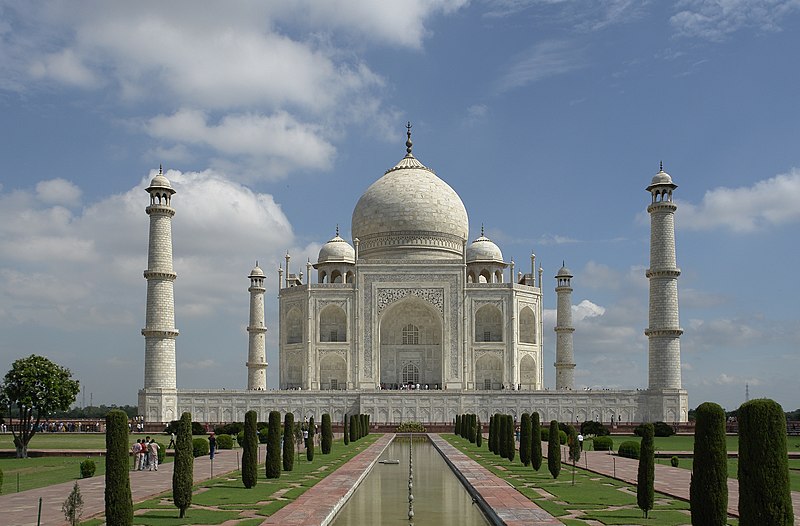The Taj Mahal, often referred to as the “Crown of Palaces,” stands as an iconic symbol of love and architectural brilliance in the heart of India, in the city of Agra, Uttar Pradesh. This magnificent white marble mausoleum, recognized as one of the New Seven Wonders of the World, attracts millions of visitors from across the globe, each year, who come to marvel at its beauty and soak in the historical and romantic significance it holds.
Commissioned by the Mughal emperor Shah Jahan in memory of his beloved wife Mumtaz Mahal, the Taj Mahal is a testament to the enduring power of love. Construction began in 1632 and took over 20 years to complete, employing thousands of artisans, architects, and laborers. The main mausoleum was finished in 1643, while the surrounding structures and gardens were completed later.
The architectural masterpiece was designed by Ustad Ahmad Lahori, an accomplished architect of Mughal origin. The Taj Mahal’s design blends Persian, Islamic, and Indian architectural styles seamlessly, creating a harmonious and symmetrical structure. The central focus of the complex is the main mausoleum, which houses the tombs of Mumtaz Mahal and Shah Jahan.
The Taj Mahal is renowned for its stunning white marble facade adorned with intricate inlay work using semiprecious stones. The craftsmanship, including delicate carvings, calligraphy, and floral motifs, is a testament to the artistic skill of the Mughal artisans. The symmetry of the Taj Mahal is a key feature, with its four minarets framing the central dome and reflecting symmetrically in the adjacent reflecting pools.
The central dome is perhaps the most iconic feature of the Taj Mahal. It is often referred to as an onion dome or an amrud (guava) dome due to its distinctive shape. The dome is topped by a finial, which is often described as a crescent moon, symbolizing the Islamic influence on the architecture.

The Taj Mahal is not only a visual delight but also a marvel of engineering. The entire complex is built on a raised platform, and the foundation is designed to withstand the threat of earthquakes. The gardens surrounding the mausoleum are laid out in a traditional Persian charbagh (four-fold) design, divided into quadrants by water channels that reflect the monument’s image.
The changing hues of the Taj Mahal at different times of the day and in different seasons add to its allure. The monument takes on a golden hue during sunrise, a bright white appearance during the day, and a soft, romantic glow during the moonlit nights. The play of light on the marble surfaces creates a magical ambiance that enchants visitors.
In 1983, the Taj Mahal was designated a UNESCO World Heritage Site, recognizing its cultural significance and contribution to world heritage. It continues to be a symbol of India’s rich history, architectural prowess, and the enduring power of love.
While the Taj Mahal has endured for centuries as a symbol of eternal love, it has also faced challenges, including environmental pollution and the impact of increased tourism. Conservation efforts are ongoing to preserve this architectural marvel for future generations, ensuring that the Taj Mahal remains a timeless testament to love and beauty in the heart of India.



